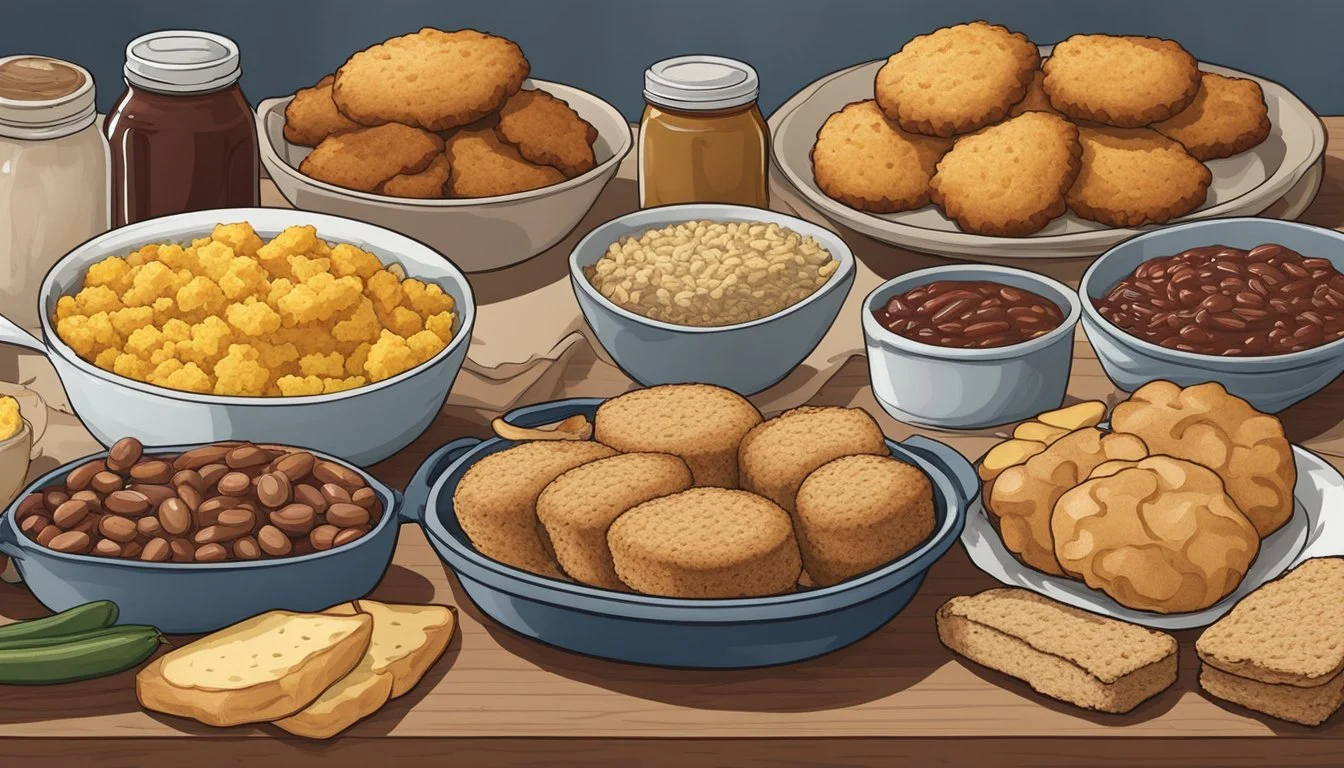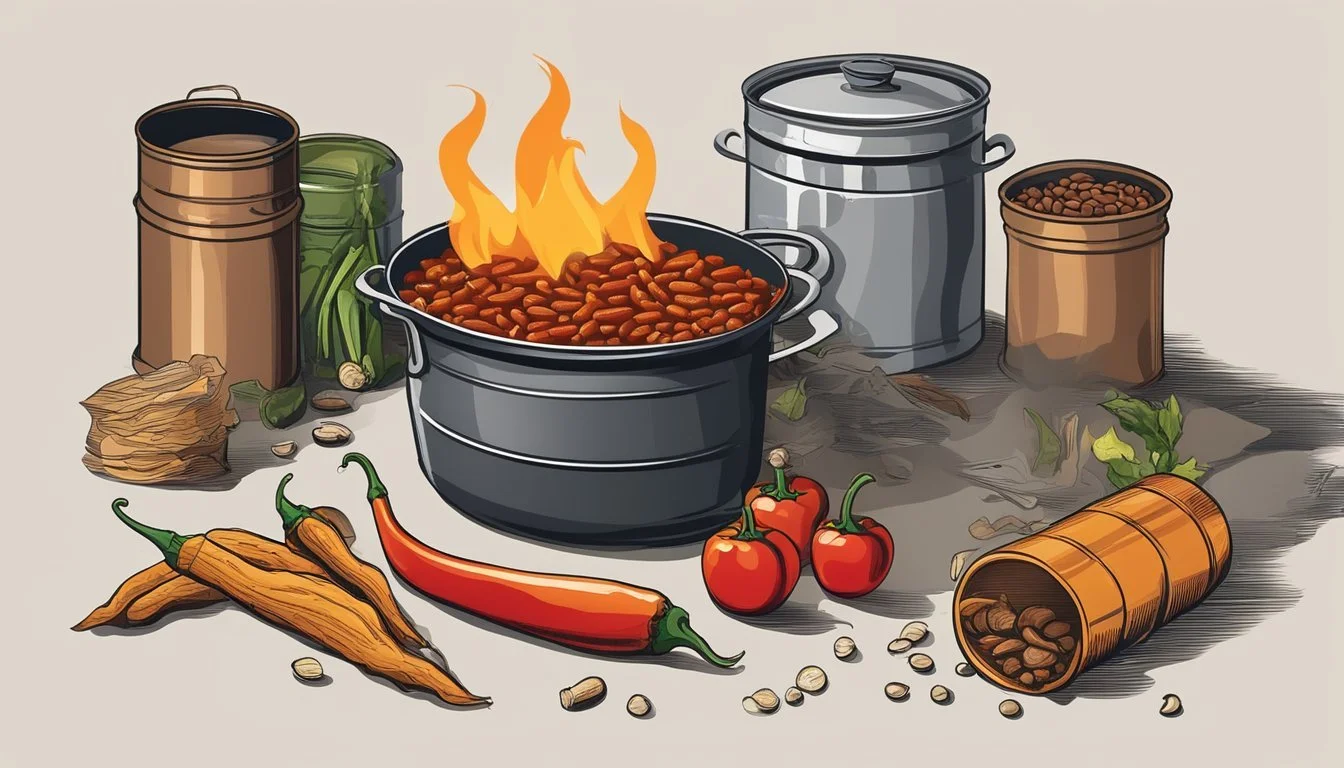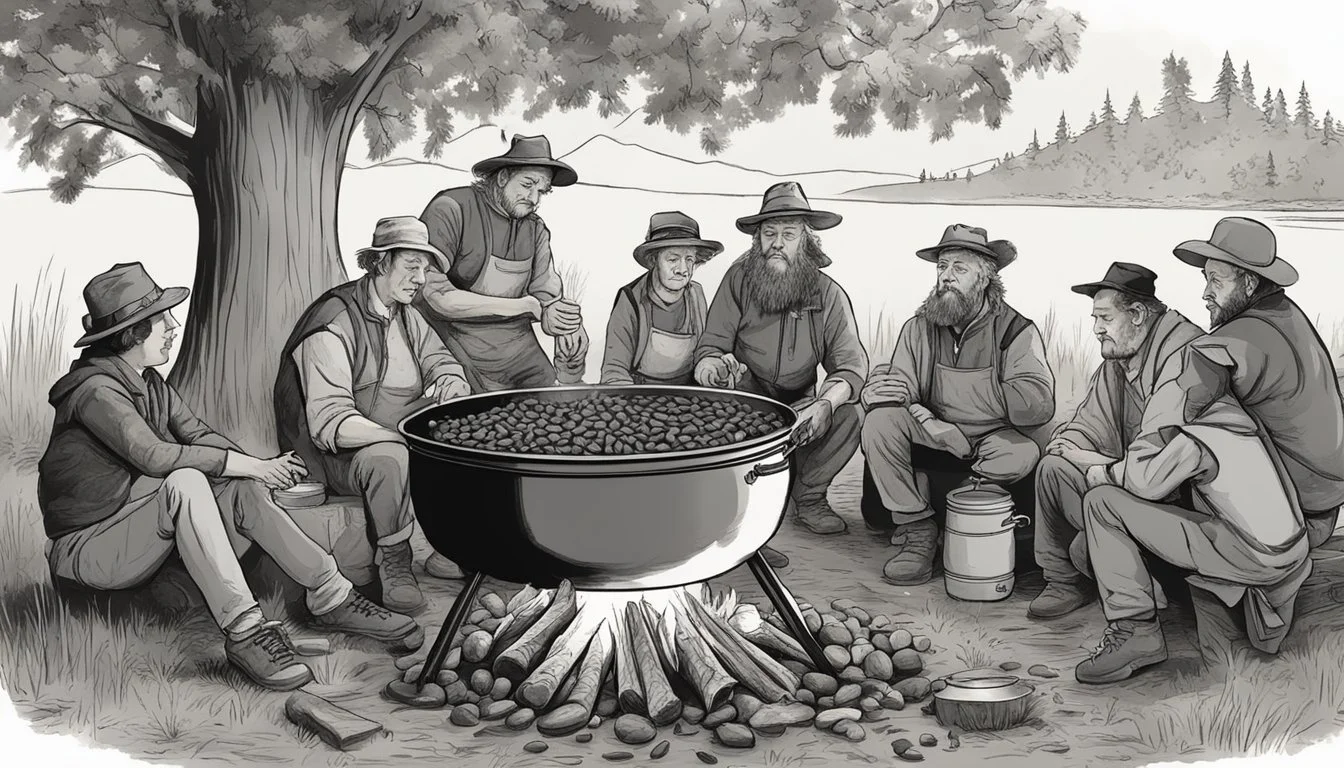10 Great Depression Foods That Were Actually Tasty
Uncovering Culinary Resilience
During the Great Depression, scarcity of resources led families to adapt and innovate in the kitchen, often creating surprisingly delicious dishes despite the limited ingredients. These culinary adaptations not only speak to the resilience and creativity of that era but also bring forward a nostalgic yet practical approach to cooking that is still appreciated today.
Exploring these recipes offers insight into how tastes and cooking methods evolved during challenging times. Many of these dishes relied on simple, accessible ingredients and ingenious methods, demonstrating that necessity truly is the mother of invention.
1) Hoover Stew
Hoover Stew became a staple during the Great Depression. Named after President Herbert Hoover, it was a budget-friendly meal that made use of inexpensive ingredients.
The dish typically included pasta, hot dogs, canned tomatoes, corn, and beans. Families found it easy to prepare with whatever they had on hand.
Cooking Hoover Stew involved boiling the pasta and hot dogs, then mixing them with the canned ingredients. The combined flavors created a hearty, filling meal that could feed several people.
2) Cornbread
Cornbread was a staple during the Great Depression, known for its simple ingredients and versatility. Made primarily from cornmeal, water, and a leavening agent, it provided a filling and affordable option for many families.
This bread could be paired with a variety of meals, including soups and stews, making it a practical choice in difficult times.
Cornbread's preparation was straightforward, often baked in a cast-iron skillet for a crispy outer layer. Some variations included the addition of buttermilk or even a touch of sugar for those who could afford it.
Its adaptability allowed for creativity; some households combined it with other ingredients like cheese or green onions. Cornbread was a testament to resourcefulness, providing sustenance with minimal cost.
3) Chili con Carne
Chili con Carne, a hearty and filling dish, became a favored meal during the Great Depression due to its simplicity and affordability. Chili typically features inexpensive ingredients like ground meat, beans, and tomatoes. These components provided essential nutrients and could be stretched to feed large families.
The dish often includes various spices such as cumin, chili powder, and paprika. Onions and garlic add depth to the flavor. By simmering the mixture for a couple of hours, the flavors meld together, creating a rich and satisfying meal.
Many traditional recipes incorporate inexpensive cuts of meat, enhancing both texture and taste. Beans, a staple in many versions, offer additional protein and bulk. This allowed families to make the dish more substantial without significantly increasing costs.
Chili con Carne remains popular today, not just for its delightful taste but also for its historical significance. It serves as a reminder of how creativity in cooking can turn simple ingredients into beloved meals.
4) Mock Apple Pie
Mock Apple Pie became a popular dessert during the Great Depression due to the scarcity and high cost of apples. This inventive sweet treat uses Ritz crackers as a substitute for apples, mimicking their texture when cooked.
The pie's filling consists of broken Ritz crackers soaked in a simple syrup flavored with lemon juice, sugar, and cinnamon. This mixture, combined with flaky pie crust, creates a surprisingly convincing apple-like flavor.
People appreciated Mock Apple Pie for its cost-effectiveness and ease of preparation. Despite its unusual ingredients, the dessert had a familiar taste that provided comfort during challenging times.
By utilizing common pantry items, Mock Apple Pie demonstrated the resourcefulness and adaptability of home cooks in making tasty dishes with limited resources.
5) Spam
Spam, introduced in 1937, became a staple during the Great Depression due to its affordability and long shelf-life. Made primarily from pork and ham, its versatility made it an attractive option for many families struggling to put meals on the table.
Canned meat was convenient and required no refrigeration, which was ideal for households without access to modern kitchen appliances.
Many creative recipes emerged as people experimented with Spam. It could be fried, baked, or added to casseroles, making it an adaptable ingredient in various dishes. Some popular preparations included Spam and eggs, Spam sandwiches, and Spam fried rice.
Despite its humble beginnings, Spam continues to be enjoyed today, appreciated for its distinct flavor and quick preparation. It remains a testament to culinary innovation during tough times.
6) Milkorno
Milkorno was a staple food during the Great Depression, developed by Cornell University scientists.
This inventive dish combined dry milk with ground corn, resulting in a protein-rich, budget-friendly meal.
People turned to Milkorno as a way to stretch their limited food supplies, ensuring they received essential nutrients.
Served as a porridge or mixed into other recipes, Milkorno provided a versatile and nutritious option.
Its simplicity and practicality made it a popular choice among families struggling to make ends meet.
7) Dandelion Salad
Dandelion salad gained popularity during the Great Depression due to the abundance and accessibility of dandelion greens. These greens were often foraged from backyards and fields, making them a budget-friendly option.
The preparation of dandelion salad was simple and efficient. The greens were thoroughly washed to remove any dirt and grit. They were then tossed with basic ingredients like vinegar, oil, and a pinch of salt and pepper.
Some recipes included additional elements such as bacon bits or boiled eggs to enhance the flavor and provide extra sustenance. Despite the modest ingredients, the salad offered a refreshing and slightly bitter taste, which many found surprisingly enjoyable.
Given its nutritional benefits, dandelion salad was not only a cost-effective dish but also a healthy choice. Dandelion greens are rich in vitamins A, C, and K, as well as minerals like iron and calcium.
Even today, dandelion salad remains a cherished recipe for those who appreciate its historical significance and unique flavor. The salad stands as a testament to the ingenuity and resourcefulness of people during tough times.
8) Codfish Cakes
Codfish cakes were a staple during the Great Depression due to their affordability and nutritional value.
Made from simple ingredients like salt cod, potatoes, and onions, these cakes offered a hearty meal that could be prepared with limited resources.
The preparation involved boiling and mashing potatoes, then combining them with flaked, salted codfish.
Seasonings such as salt, pepper, and sometimes garlic or paprika were added to enhance the flavor.
The mixture was then shaped into patties and fried until golden brown.
This method of cooking codfish cakes provided a delicious, budget-friendly option for families.
9) Potato Pancakes
Potato pancakes, also known as latkes, were a popular dish during the Great Depression. These pancakes are made from simple ingredients: potatoes, eggs, and onions. The straightforward preparation and inexpensive components made them a go-to for many families.
To make potato pancakes, potatoes are shredded and combined with eggs and chopped onions. This mixture is then formed into small patties. The patties are fried in a hot pan with oil until they turn golden brown and crispy.
The frying process gives the potato pancakes a delightful crunch on the outside while keeping the inside soft and tender. They are often seasoned with salt and pepper, enhancing their natural flavors.
Potato pancakes were typically served as a main dish or a side. They paired well with various condiments such as sour cream, applesauce, or even ketchup.
These pancakes were a creative way to transform basic ingredients into something satisfying and flavorful. Despite their simplicity, they remain a cherished recipe passed down through generations.
10) Hobo Stew
Hobo Stew was a staple during the Great Depression. It was a simple, yet filling dish that made use of whatever ingredients were available. People often used vegetables, potatoes, and bits of meat they could find or afford.
This dish was usually cooked in a single pot, making it easy to prepare and clean up. The ingredients would be boiled together to create a hearty stew. The recipe was flexible, allowing for variations depending on what was on hand.
The appeal of Hobo Stew lay in its simplicity and versatility. It brought people together around a communal pot, fostering a sense of community during difficult times. The flavor and nutrition it provided were crucial for survival.
Historical Background of Great Depression Cuisine
The Great Depression drastically altered food availability and led to innovative cooking techniques to make the most out of limited resources.
Economic Impact on Food Availability
The stock market crash of 1929 deeply disrupted the economy. Money for food became scarce, leading many families to rely heavily on inexpensive staples. Common foods included beans, rice, and canned goods. Home gardening grew popular as people aimed to be more self-sufficient. Items like Spam, introduced in 1937, became a household name due to their affordability and long shelf life.
Programs such as soup kitchens emerged to support those in dire need. Government initiatives like the Works Progress Administration (WPA) also offered some relief. Despite hardships, communities often came together, sharing resources and meals to endure tough times.
Innovative Cooking Techniques Developed
Faced with scarcity, people became exceptionally resourceful in the kitchen. Simple ingredients were turned into filling meals. Recipes like oxtail soup used parts of animals that were often discarded. These dishes, although basic, offered vital nutrition.
New methods included making casseroles from pantry staples and creative substitutions, such as using homegrown vegetables. Stretching ingredients was key. For example, adding bread or crackers to meatloaf increased volume. Baking bread at home became common, not just for cost-saving, but for the comfort it brought.
These techniques didn't just ensure sustenance; they also added a sense of normalcy and warmth amidst the economic turmoil. Through these efforts, families managed to create nutritious and sometimes even enjoyable meals despite significant financial constraints.
Ingredients Commonly Used in Depression-Era Recipes
During the Great Depression, resourcefulness was key in the kitchen. Cooks relied heavily on staple foods and substitutes, as well as homegrown and foraged ingredients to create nourishing meals.
Staple Foods and Substitutes
Beans were a primary source of protein. Varieties like pinto, navy, and kidney beans made frequent appearances in soups and casseroles.
Rice and potatoes served as affordable and filling base ingredients.
Flour and cornmeal were essential for baking bread, making pancakes, and other such items.
Powdered milk and evaporated milk provided needed nutrition when fresh milk was not available.
Molasses often substituted for sugar due to its availability and lower cost.
Canned foods became more common, with items like canned tomatoes and peas being staples in many households.
Lard and shortening were used frequently in place of more expensive cooking oils and butter.
Homegrown and Foraged Ingredients
Vegetable gardens became crucial, yielding crops like carrots, cabbage, and beans.
Root vegetables such as turnips and beets were popular due to their long storage life.
Wild greens such as dandelion leaves and chicory were foraged and used in salads and soups.
Fruits like apples and berries were often preserved through canning or drying to create jams, jellies, and pie fillings.
Herbs such as parsley and mint could be grown at home or gathered from the wild, providing flavor without additional cost.
Eggs and poultry from backyard chickens offered valuable protein sources and were used judiciously in many recipes.
Using these ingredients, families were able to create both economical and surprisingly tasty dishes despite the challenging circumstances of the time.
Cultural Significance of Great Depression Foods
The foods of the Great Depression not only provided sustenance during hard times but also became an integral part of cultural identity. These dishes reflect regional adaptations and contributed to family and community traditions that linger on even today.
Regional Variations
Great Depression foods varied significantly across different regions in the United States. For example, Ox-tail soup was a staple in some locales, with variations such as the Creole version in Louisiana and a simpler soup in other areas. In Korean-American households, ox-tail might even be barbecued or fried and combined with daikon radish.
In the Midwest, dishes like spam and coffee soup were common. Spam, introduced in 1937, became particularly popular due to its long shelf life and low cost. Meanwhile, coffee soup – made by mixing brewed coffee with ingredients like stale bread and sugar – was a desperate yet creative solution to food scarcity.
Community and Family Traditions
These foods also played a critical role in fostering community and family traditions. During the Depression, meals were often communal, enhancing fellowship and support during tough times. Families frequently gathered to share peanut butter-stuffed onions or a simple salad made from canned peas and corned beef.
Shared recipes and cooking methods were passed down through generations, solidifying their place in cultural memory. Spaghetti with carrots and white sauce became a family favorite in many households, symbolizing resourcefulness and the ability to create enjoyable meals from limited ingredients.
By preserving and sharing these recipes, families ensured that the ingenuity and spirit of the Great Depression were not forgotten. These dishes, though born out of necessity, became beloved parts of cultural heritage, highlighting the resilience and creativity that defined the era.







